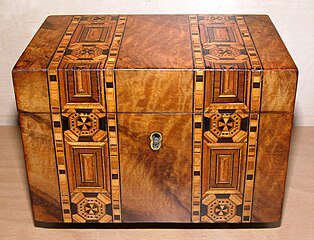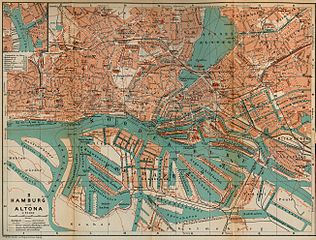Is forecast on the French tea market like the weather forecast?
I found a summary of a study on the tea and coffee market in France in 2011. It was made by a company that specializes in market analysis and has been doing this for years.
I know that two third of the year is already behind us but I still wanted to share with you what is happening on a “mature” market and I swear that next year, I will be more reactive.
I only have access to the French summary but if you know someone with money that might be willing to subsidise me, let me know.
What can we learn in this study?
According to their forecast, the tea and coffee consumption in volume in France should rise by 1.5%, which is higher than the average rise of the food and beverage sector.
However, when you look at it more closely, the situation is not as bright as it might seem.
Coffee and tea capsules should be 2011 main product, the one that will still grow. Coffee (both roasted and ready to drink) and medium quality teas are decreasing.
Regarding the increased costs of supply, it seems that several health and climate issues had an impact on the industry as the tea and coffee processing industrials don’t have the bargaining power to increase their prices (the French panel that was used saw its raw margin decrease by 4 points between 2003 et 2010).
The way out for the producers seems to be innovation, both to change their products (with sometimes strange results, seeTwinnings and Earl Grey) and to create new markets through added value (check what Sylain Orebi, owner of Kusmi Tea, tells us about the launch in mid 2010 of Løv Organic, a brand of organic teas).
I won’t analyse the coffee market more than this but the hype seems to be these doses with new machines being launched, including some under store brands . And this could impact the tea market too as Nestlé launched in France its Special T, hoping to turn it into a new Nespresso.
I can’t be 100% sure about these trend analysis as I don’t have access to the full report, their summary is sometimes a bit messy with no clear distinction between coffee and tea (logical since they want you and me to buy their products) and this report focuses only on the French market.
But I thought that a “quick” theoretical analysis of this industry forecast could be interesting.
I hope to be clear enough for all of you and let me remind you that this is my own point of view/analysis.
The strategy used by all the main players seems to focus on innovation, be it either by changing the blends (exactly what Lipton does when it changes a lot of its recipes in a year), launching new brands with a different message and a different target (Kusmi Tea and Løv Organic) or trying to enter a new market (Nestlé).
Obviously, the last one is a bit different since they try to promote their know-how but it is not that much different if you think about it.
The final result is that companies are offering to their customers something with more perceived value that hopefully (for them) will cost them the same or less while allowing them to sell it at an increased price.
In other words, they try to differentiate themselves from their competitors, which is the definition of what a differentiation strategy is.
But how come these different changes of the value/price paradigm of different products all fall under the same generic strategy?
To answer that, we need to get a little more into differentiation strategies.
|
|
The uniqueness of the new offer is seen and valued by the whole market
|
The uniqueness of the new offer is only seen and valued by a specific market segment
|
|
|
Increase of the value/ price couple
|
Improvement strategies
|
Specialisation strategies
|
Differentiation towards the top part of the market
|
|
Decrease of the value/price couple
|
Purification strategies
|
Limitation strategies
|
Differentiation aimed at the lower part of the market
|
|
|
A posteriori segmentation that happens after the launch of the new offer
|
A priori segmentation that makes it possible to find what should be specific about the new offer
|
|
Adapted from Strategor, Dunod, 1997
Nice table, no? But what does it really mean?
An improvement strategy is when a company focuses on giving all customers a better value with specific products that would sell more if they were at the same price as the standard product. For example, Mariage Frères teas would be preferred by everyone if they were sold at the price of Lipton ones.
A specialisation strategy means that the company does the same as previously but only for a specific market segment Here, let’s say that a company focus is only selling teas adapted to the Chinese population in France.
A purification strategy (I am not happy with this translation but it is the best I could find for now) is when a company sells a product that is perceived as being of lower quality but at a much lower price than the standard tea.
A limitation strategy is the same but applied once more to a specific target. Let’s say that I don’t care about iced teas, a company selling me a box of teas at a lower price would satisfy me.
When you look at the “future” trends and at the above table, you can see that each of the three strategies exposed previously fits in there.
Lipton is clearly following the improvement or on the purification strategy as its target is the market as a whole and they try to change the value/price couple of their products (I don’t think we could all agree if they improve or decrease it so I won’t put them into a specific box).
Løv Organic is following what is more a specialisation strategy as it targets those interested in organic teas with high value/price products.
Nestlé gets into the market, which sets it a bit apart from the others, but I think they are targeting the whole market with a “better” quality product sold at a higher price. This is akin to an improvement strategy.
Now that we know what are differentiation strategies and that there is a differentiation strategy going on, the next question, which is very market specific, is rather obvious: when is it the right time to focus on a differentiation strategy?
To answer this, I think that Michael Porter could help us.
“A differentiation strategy is appropriate where the target customer segment is not price-sensitive, the market is competitive or saturated, customers have very specific needs which are possibly under-served, and the firm has unique resources and capabilities which enable it to satisfy these needs in ways that are difficult to copy.” (Source: Wikipedia, Porter Generic Strategies)
Are tea drinkers price-sensitive? Yes like everybody but I think a bit less than most people (at least when these people moved away from tea in bags) since they want value their money and .know that a quality tea can be costly (which doesn’t mean that people are ready to pay any price for a tea).
Is the market saturated or competitive? Right now, I (and I do mean I) think the French tea market is rather saturated. You will always be able to find new niche players focusing on specific aspects but I see it as less competitive than the market in the USA. Why? Because the market is not that huge, is quite “old” and people prefer flavoured teas coupled together with the prestige of specific big names. Is this likely to change? It could change but it would take a radical shift in the way people in general think about tea.
Do people have specific needs that are not fulfilled? With the modern trend of customisation and differentiation among people, the answer is quite obvious and it is yes (and the tea industry isn’t the only one to be in this kind of situation).
Do companies have unique resources and capabilities […] that are difficult to copy? Yes and no. Yes because a blend is something unique, people are not eager to try to copy them and other companies try to differentiate themselves, which means that copying each other is not a good thing but no because as a lot of you know that with the right raw products, you can always get really close to the original blend.
Dealing with market analysis is a bit like dealing with a stormy weather forecast: in the end, it is either completely wrong or right but only in small pieces of the country.
Things are moving fast and what is true one day could be wrong the next one.
And in your different countries, how is the tea industry positioning/repositioning itself?











Recent Comments